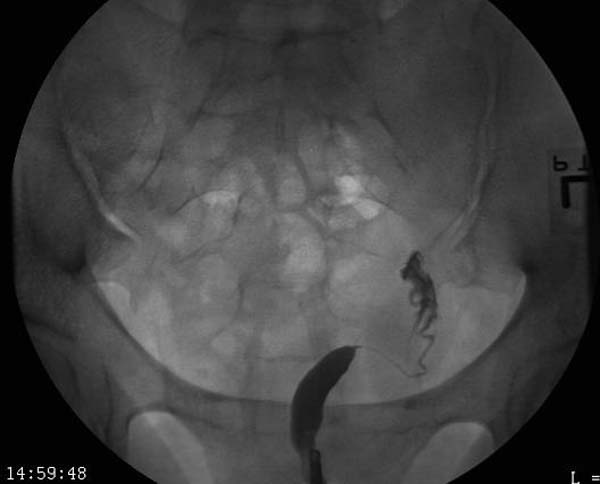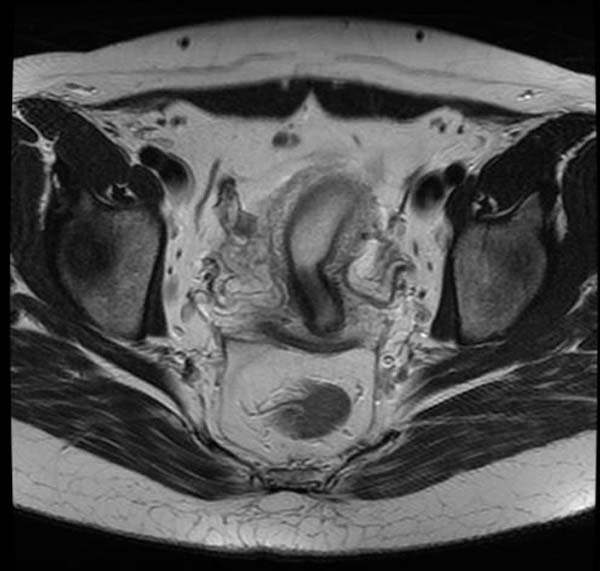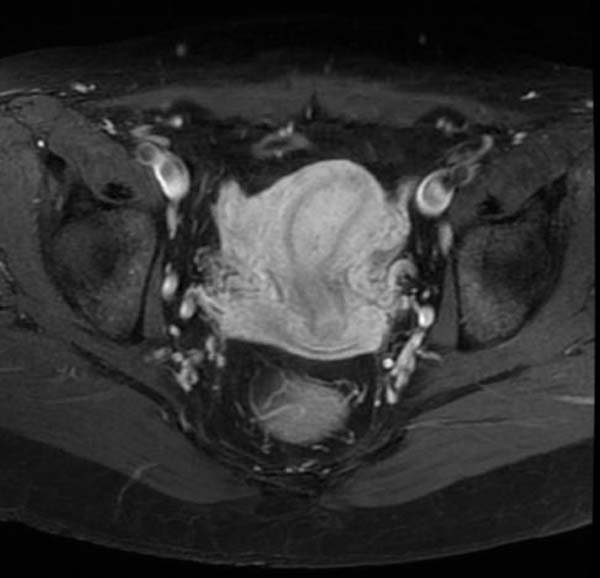Unicornuate uterus
Jump to navigation
Jump to search
| Unicornuate uterus |
- Failure of one müllerian duct to elongate while the other develops normally
- Accounts for approximately 20% of müllerian duct anomalies.
- The embryologic predominance of the unicornuate uterus to be on the right has not been explained.
- Spontaneous abortion rates are reported to range from 41% to 62%.
- Reported premature birth rates range from 10% to 20%
- Fetal survival rates, from 38% to 57% (pooled data, 40%).
- Renal abnormalities are more commonly associated with unicornuate uterus than with other müllerian duct anomalies
- Reported in 40% of these patients.
- Anomaly is always ipsilateral to the rudimentary horn.
- Renal agenesis is the most commonly reported abnormality, occurring in 67% of cases.
Diagnosis
HSG
- Endometrial cavity assumes a fusiform shape, tapering at the apex and draining into a solitary fallopian tube.
- Uterus is generally shifted off of midline.
MRI
- Unicornuate uterus appears curved and elongated, with the external uterine contour assuming a banana shape.
- Uterine volume is reduced, and the configuration of the uterus is asymmetric.
- Normal myometrial zonal anatomy is maintained.
Images
Patient #1
See Also
- Mullerian duct anomalies classification system
- Arcuate uterus
- Bicornuate uterus
- Septate uterus
- Uterus didelphys
External Links
References for Unicornuate uterus
- Robert N. Troiano, and Shirley M. McCarthy. Müllerian Duct Anomalies: Imaging and Clinical Issues. Radiology 2004 233: 19-34.
Template:Skin and subcutaneous tissue symptoms and signs Template:Nervous and musculoskeletal system symptoms and signs Template:Urinary system symptoms and signs Template:Cognition, perception, emotional state and behaviour symptoms and signs Template:Speech and voice symptoms and signs Template:General symptoms and signs


